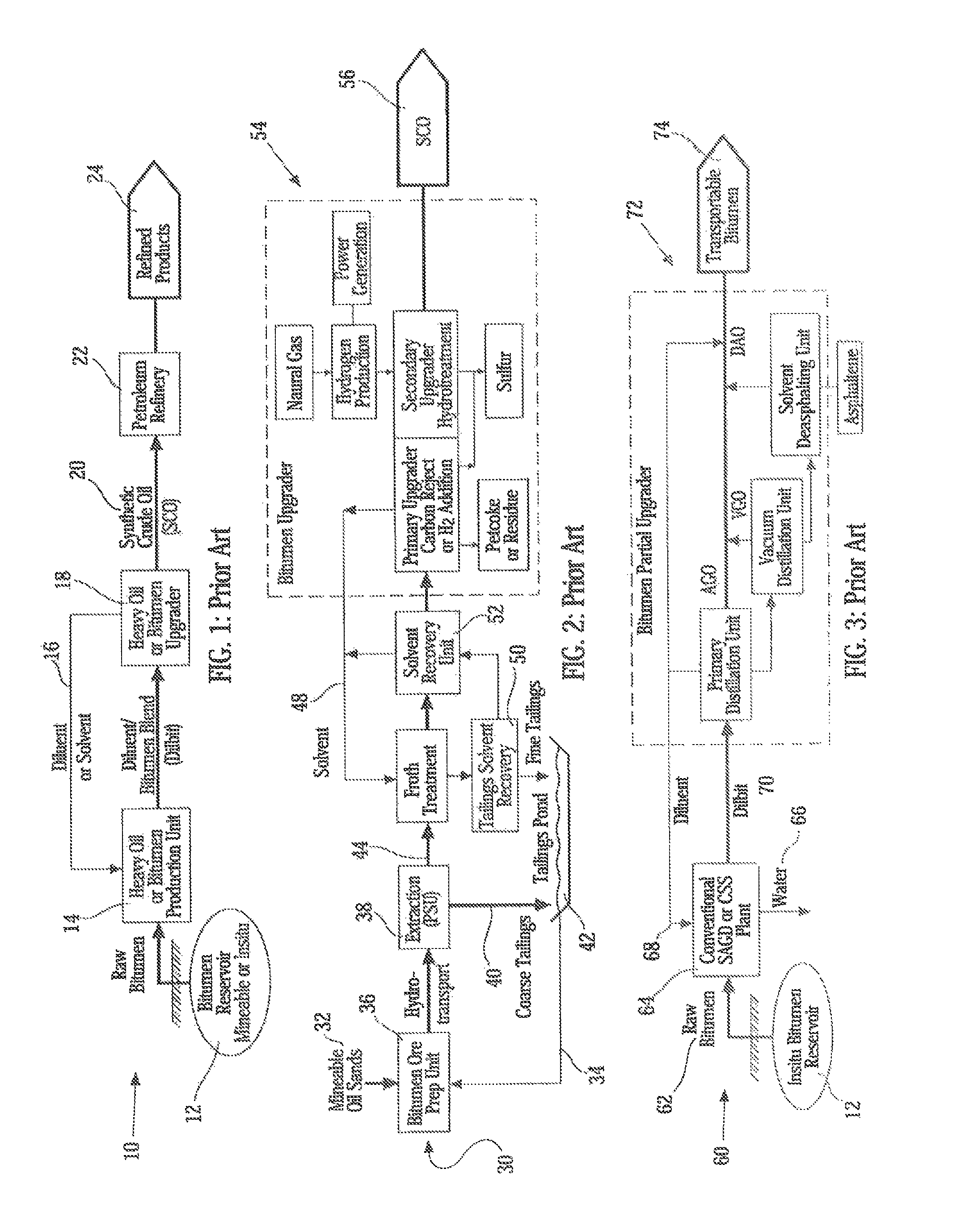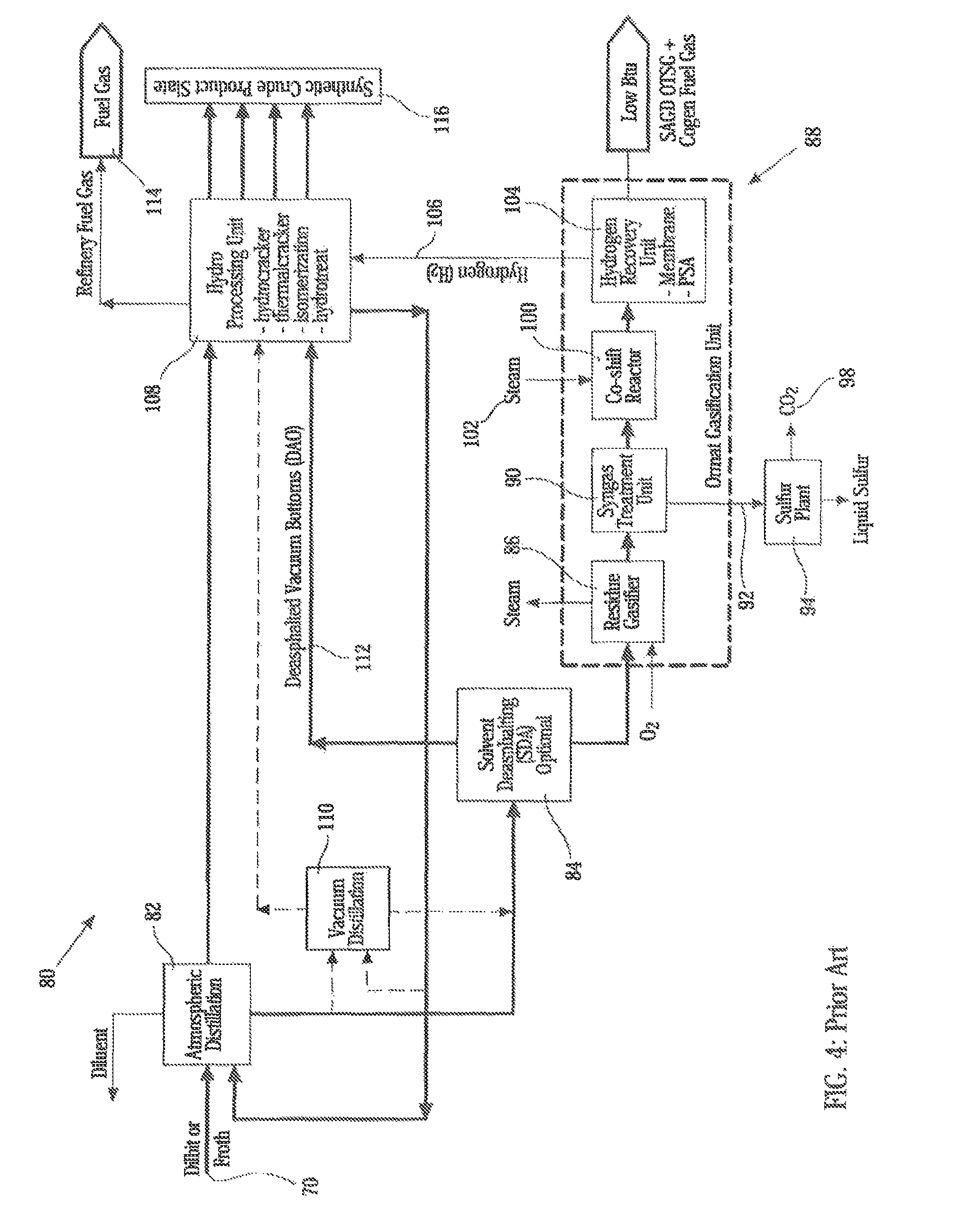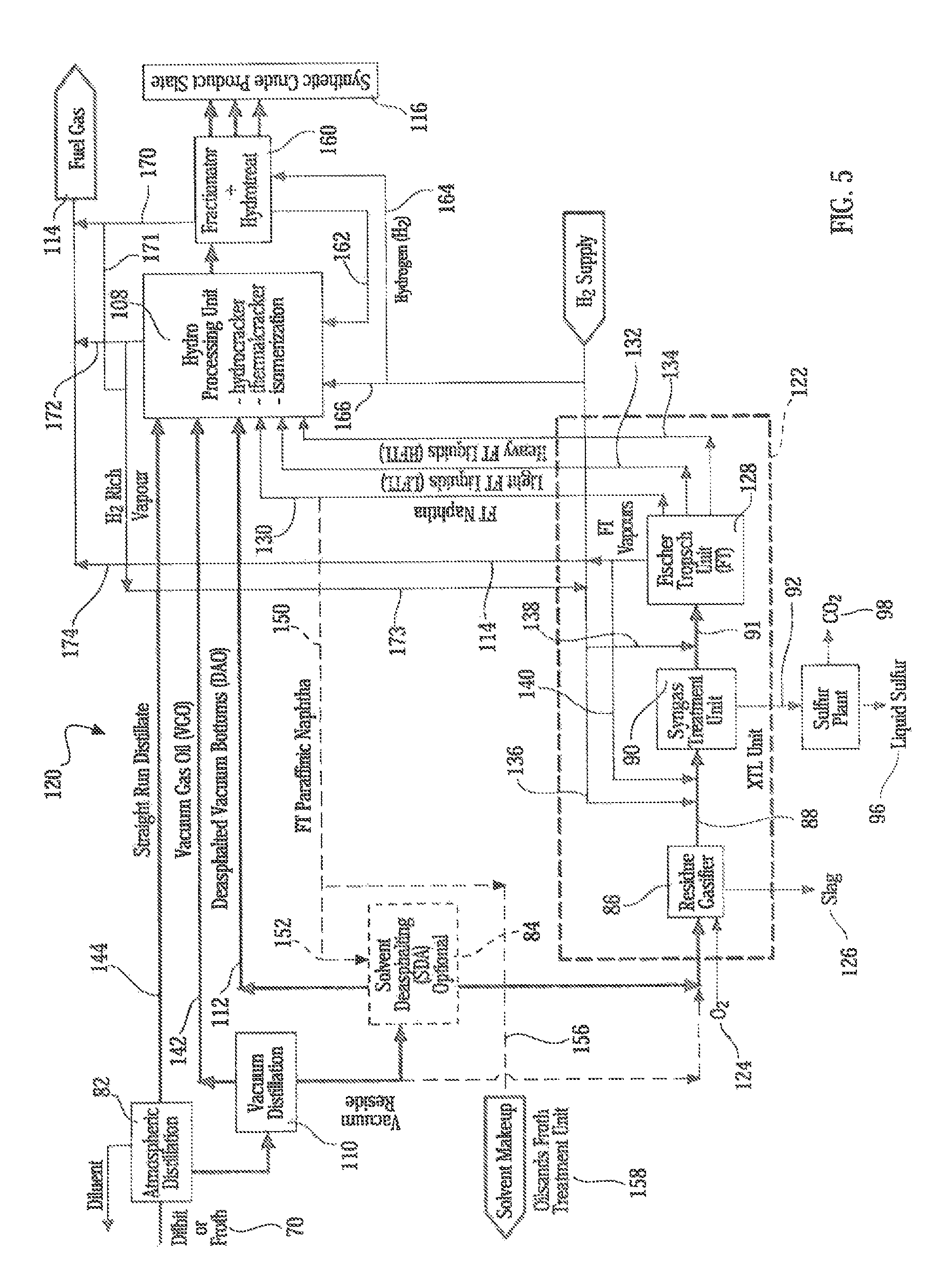Process for co-producing commercially valuable products from byproducts of heavy oil and bitumen upgrading process
a technology of heavy oil and byproducts, which is applied in the direction of hydrocarbon preparation, liquid hydrocarbon mixture production, petroleum industry, etc., can solve the problems of easy conversion, undesirable waste material, and the need to remove the fraction, so as to achieve the effect of increasing the yield
- Summary
- Abstract
- Description
- Claims
- Application Information
AI Technical Summary
Benefits of technology
Problems solved by technology
Method used
Image
Examples
example 1
[0109]This example describes the design basis of a co-production Methanol Plant 302, whereby a portion of about 356 MMSCFD of stream 190c is removed from the Fischer-Tropsch synthesis feed and directed as the base feed to unit 302. It is further combined with about 656 TPD CO2 from by-product stream 98a and about 40.6 MMSCFD H2 from stream 164, the result would be the optimum feed for co-production of 5,000 TPD or 1,800,000 TPY of Methanol by-product. This is the current world scale commercial methanol plant.[0110]a) Partial Stream 190c 356 MMSCFD or 39,035 moles / hr syngas with H2:CO=2.0[0111]b) Partial Stream 98a 656 TPD CO2 or 1370 moles / hr CO2 [0112]c) Partial Stream 164 40.6 MMSCFD H2 or 4452 moles / hr H2 [0113]d) The total syngas to Unit 302 44,856 moles / hr, or 67.94% H2, 29.06% CO, 3.0% CO2 [0114]e) Therefore, optimum syngas to Unit 302=(67.94-3.0) / 29.06+3.0)=2.03[0115]f) Total stream of 13,011 moles / hr CO+1,370 moles / hr CO2+30,475 moles / hr H2 results in 14,381 moles / hr CH3OH o...
example 2
[0116]This example describes a design basis of a co-production Ammonia Plant 310, whereby the Air Separation Unit produces 2100 TPD of high purity oxygen 124 for the upgrader use. The subsequent by-product of nitrogen results in 8,300 TPD N2 as stream 308. A portion of about 306 MMSCFD H2 from stream 164 is combined with 4,194 TPD N2, the result would be the optimum feed for the co-production of 5,000 TPD or 1,800,000 TPY of Ammonia by-product. This is the current world scale commercial ammonia plant.[0117]a) Partial Stream 308 consisting of 4,194 TPD N2 or 11,333 moles / hr[0118]b) Partial Stream 164 consisting of 306 MMSCFD H2 or 33,553 moles / hr H2 [0119]c) The total feed stream to Unit 310 of 44,886 moles / hr, or 25.2% N2 and 74.8% H2 [0120]d) 11,333 moles / hr N2+33,553 moles / hr H2 results in 22,666 moles / hr NH3 or about 453,320 lb / hr=5,000 TPD or 1,800,000 TPY ammonia
example 3
[0121]This example describes a design basis for a co-production Urea Plant 314, whereby a portion of the ammonia production 312 and additional by-product CO2 from the upgrader / refinery (98 a, b or c) is combined to produce urea fertilizer.[0122]a) Partial Stream 312 consisting of 4,202 TPD NH3 or 19,048 moles / hr[0123]b) Remaining portion of Stream 98a consisting of 544 TPD CO2 and Partial Stream 98c consisting of 4017 TPD CO2 for total of 4,561 TPD CO2 or 9,524 moles / hr CO2 [0124]c) The total feed stream to Unit 314 of 28,572 moles / hr, or 66.7% NH3 and 33.3% CO2 [0125]d) 19,048 moles / hr NH3+9,524 moles / hr CO2 results in 9,524 moles / hr NH2CONH2 or about 628,584 lb / hr=6,800 TPD or 2,400,000 TPY urea
[0126]The examples described above illustrate how the integration of the co-product units can recover a significant portion of the upgrader / refinery GHG CO2 emissions and co-produce 5,000 TPD Methanol and 5,000 TPD Ammonia or 6,800 TPD of Urea, and result in a “Near Zero GHG Emissions World...
PUM
| Property | Measurement | Unit |
|---|---|---|
| pressure | aaaaa | aaaaa |
| viscosity | aaaaa | aaaaa |
| density | aaaaa | aaaaa |
Abstract
Description
Claims
Application Information
 Login to View More
Login to View More - R&D
- Intellectual Property
- Life Sciences
- Materials
- Tech Scout
- Unparalleled Data Quality
- Higher Quality Content
- 60% Fewer Hallucinations
Browse by: Latest US Patents, China's latest patents, Technical Efficacy Thesaurus, Application Domain, Technology Topic, Popular Technical Reports.
© 2025 PatSnap. All rights reserved.Legal|Privacy policy|Modern Slavery Act Transparency Statement|Sitemap|About US| Contact US: help@patsnap.com



